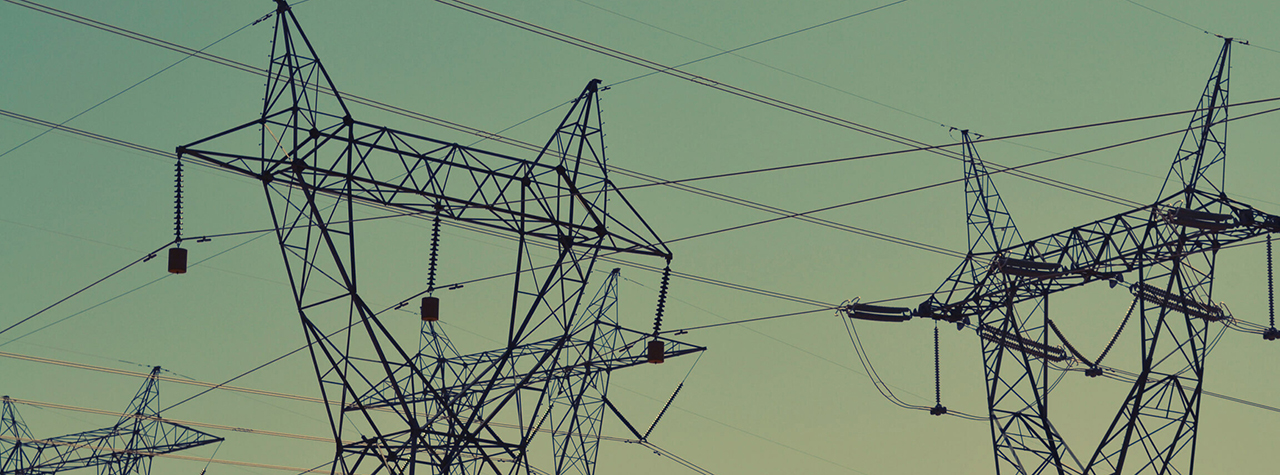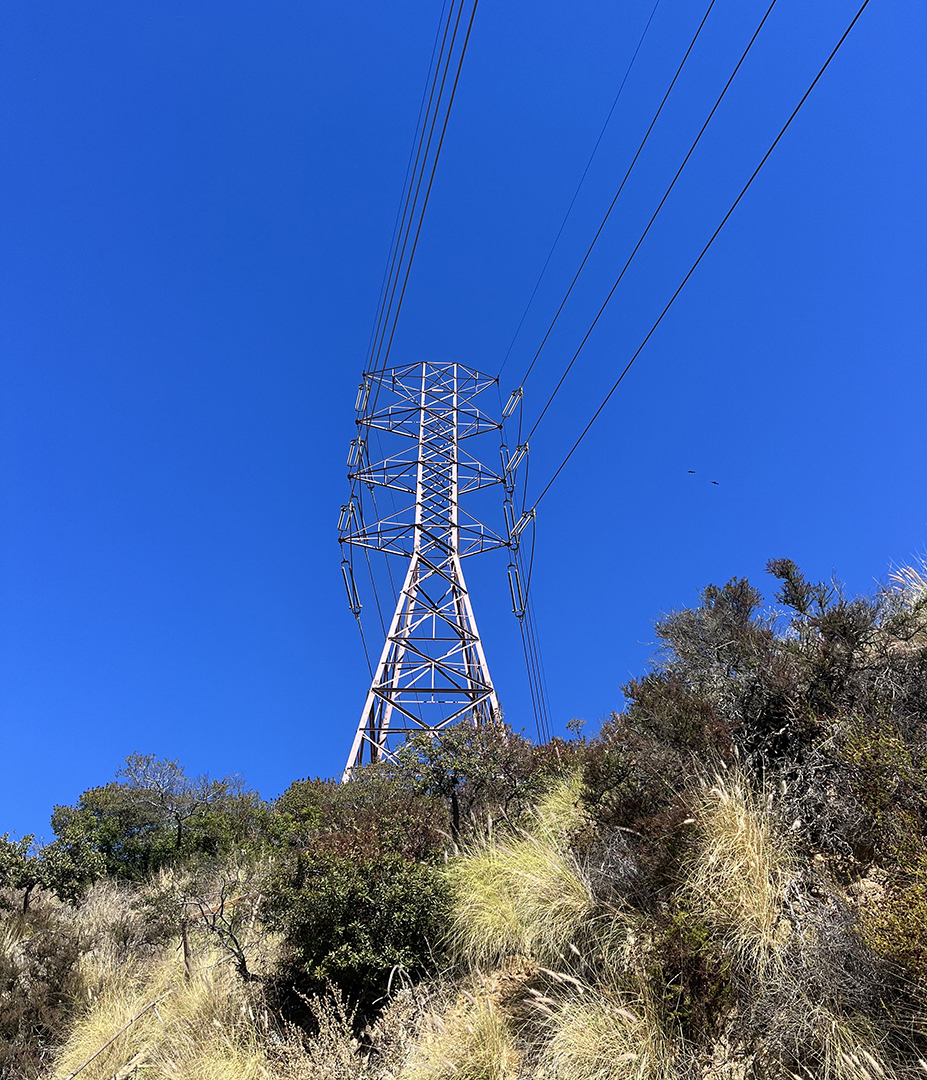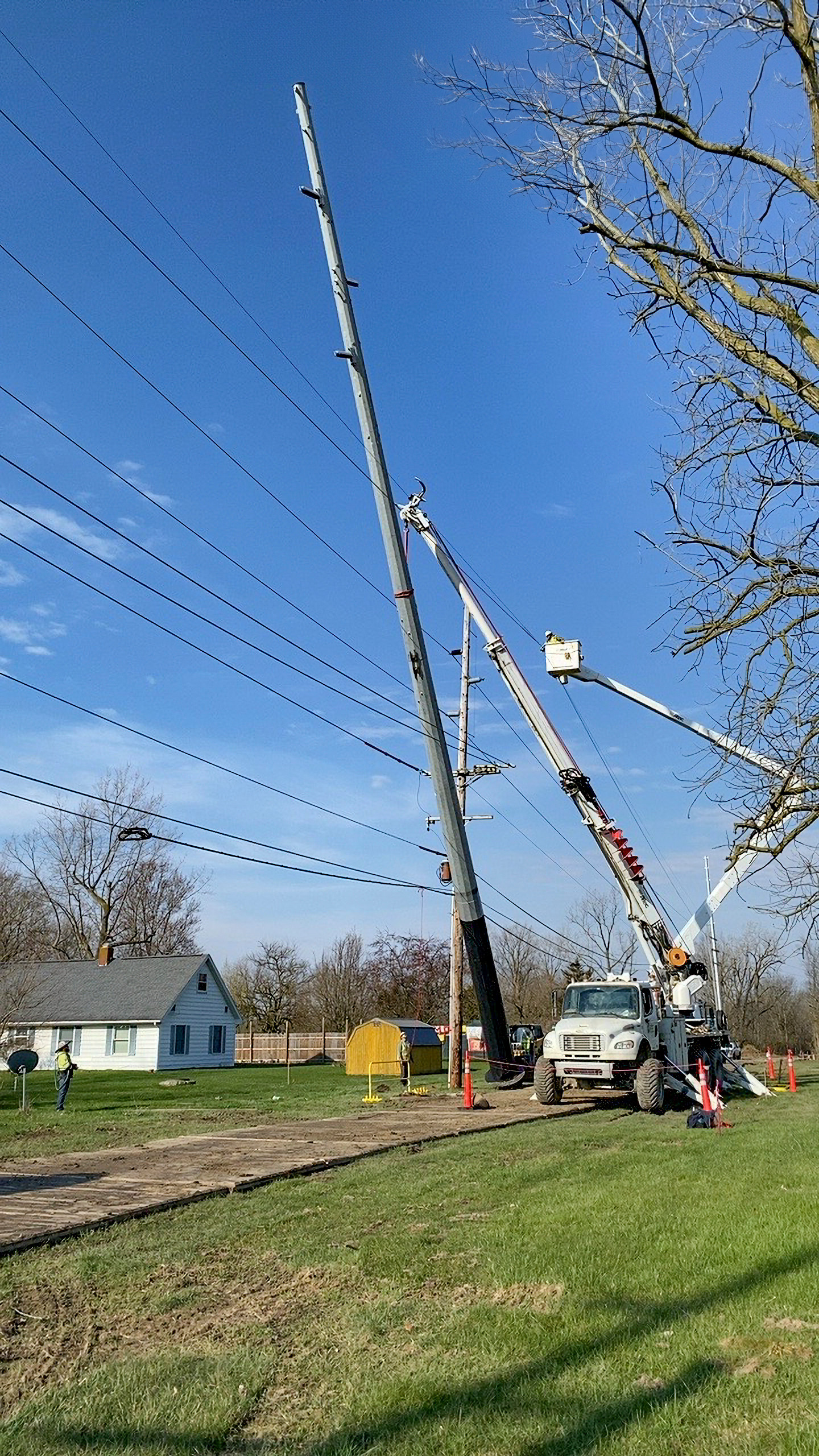Condition, Capacity, Operation & Maintenance
Energy Generation
The U.S. is undergoing a transformational shift in how energy is used and generated through more than 12,500 utility-scale electric power plants. Consumers and businesses are growing increasingly reliant on data storage facilities, artificial intelligence (AI), and electrified products such as EVs, to name just a few examples of advancements adding immense strain to an already fragile and aging electric grid. Data centers alone are expected to demand 35 GW of electricity by 2030, up from 17 GW in 2022, growing roughly 10% per year.
[site_chart id="19221"]
Electricity peak demand growth is at its highest point in two decades. After years of stable growth, summer and winter peak demands are expected to increase 15% and 18%, respectively, by 2034. Yet, traditional resources such as coal needed to supply that demand are being retired, and new weather-dependent resources are merely replacing the lost generation rather than matching demand growth.
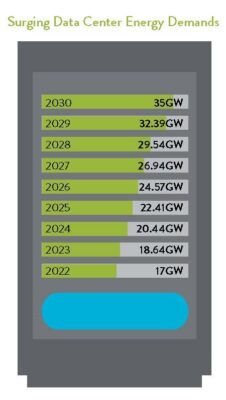
These rising energy demands are occurring in conjunction with national and state policy changes meant to reduce carbon emissions and reliance on fossil fuels, which have historically served as the most reliable energy sources. Renewable sources have become more efficient and cost- effective in recent years, coinciding with 22 states and the District of Columbia (DC) establishing net-zero carbon emission goals. In addition, 29 states and DC have adopted Renewable Portfolio Standards (RPS), which encourage improved reliability of renewable systems. Grants and subsidies from the 2022 IRA have further incentivized renewable energy generation. Consumer trends and policy changes are beginning to have an effect. U.S. energy- related CO2 emissions declined by 3% in 2023, largely credited to the decrease of coal-fired generation.
New generation or storage projects must submit interconnection requests to be added to the grid. The lengthy request process, which can take an average of 35 months to complete, and coordination with all stakeholders is cited by developers as the leading cause of project delays and cancellations, and this has led to interconnection queues increasing nearly eightfold in the past decade and by 30% in 2023 alone. Nearly 2,600 GW of generation and storage capacity is seeking grid interconnection. The Federal Energy Regulatory Commission (FERC) adopted interconnection reforms in 2023 to speed up this process, but they have not taken effect in most regions.
Despite the turn to industrial and consumer electrification, natural gas still plays a dominant role in energy generation, providing 42.3% of total energy generation in the U.S. in 2023. In 2022, the nation’s 3 million miles of natural gas pipelines delivered more than 29 trillion cubic feet of natural gas to more than 78 million consumers. The U.S. has 129 operable refineries, down from 135 in 2020, which produced just over 19 million barrels per day in 2023, about 1 million less than in 2020.
Roughly half of the existing gas pipeline network was installed in the 1950s and 1960s, further emphasizing the need to invest in maintenance, upgrades, and expansion of the network to reduce the risk of delivery bottlenecks or leakage events, which are still occurring with some regularity. Oil and gas system improvements are primarily funded by regulated owner rates and limited recovery; upgrade investments are typically driven by urgency and necessity rather than through asset management and life- cycle cost-based planning. For example, following Winter Storm Uri in Texas in 2021, the state’s Public Utilities Commission required power plants to winterize to prevent future blackouts from occurring, but lawmakers did not require the Texas Railroad Commission, which regulates the gas industry, to quickly impose weatherization standards.
More than 36 GW of solar is expected to be added to the grid in 2024, nearly doubling 2023’s 18.4 GW increase, which itself was a record. Developers and power plant owners are making record yearly expansions to utility-scale electric-generating capacity and battery storage capacity. In 2024, the U.S. nearly doubled its existing 15.5 GW battery storage capacity with an additional 14.3 GW coming online.
Solar is expected to compose 58% of new electric energy capacity additions in 2024. Wind will add 8.2 GW of capacity in 2024, 13% of new energy capacity, after a record addition of more than 14 GW in both 2020 and 2021. Natural gas is expected to add 2.5 GW of planned capacity additions, the lowest annually added in 25 years.
Transitioning to renewable energy also has emphasized energy storage to safeguard the grid when renewable sources are not at peak performance. There are approximately 40 GW of battery storage in the U.S., with 8 GW installed in 2023. Utility-scale batteries now account for 48% of all energy storage in the U.S., up from just 6% in 2018.
The remaining 22 GW of energy storage comes from pumped storage hydropower (PSH), which has the lowest impact to global warming of any energy storage technologies.
The U.S. currently has 43 PSH plants with the potential to double PSH capacity. For example, Alaska has 1,800 suitable locations for new PSH facilities to bolster the state’s energy reliability. The majority of PSH plants were built in the 1970s, and U.S. PSH investment has been stagnant since the 1990s, in part due to increased costs and permitting. Since the passage of the IRA, PSH projects are now eligible for a tax credit of up to 30% the project cost.
NERC reports over 83 GW of fossil-fired and nuclear generator retirements are currently anticipated through 2033. Increased renewable and natural gas generation has offset the loss of coal-fired generation, but sector wide generation outlooks fail to keep up with surging demands. The time to plan, go through lengthy environmental review and permitting processes, construct and bring a renewable energy resource online, and go through interconnection requests can take anywhere from 2 to 4 years for solar or onshore wind projects and 5 to 10 years for offshore wind. Constructing a data center, which consumes the equivalent of 80,000 homes’ worth of energy, can be completed in just over one year, creating capacity challenges.
Electric vehicles are also complicating the energy sector’s ability to maintain sufficient capacity. In March 2021, an Executive Order was issued that 50% of all cars sold in the U.S. by 2030 must be net-zero greenhouse gas emitters. The IIJA allocated $7.5 billion to build a national network of EV chargers, but some estimates indicate the nation will need closer to $40 billion in charging infrastructure investment to achieve 100% passenger EV sales by 2035.
Electric-Generating Capacity Additions for 2024
[caption id="attachment_19957" align="aligncenter" width="1642"]
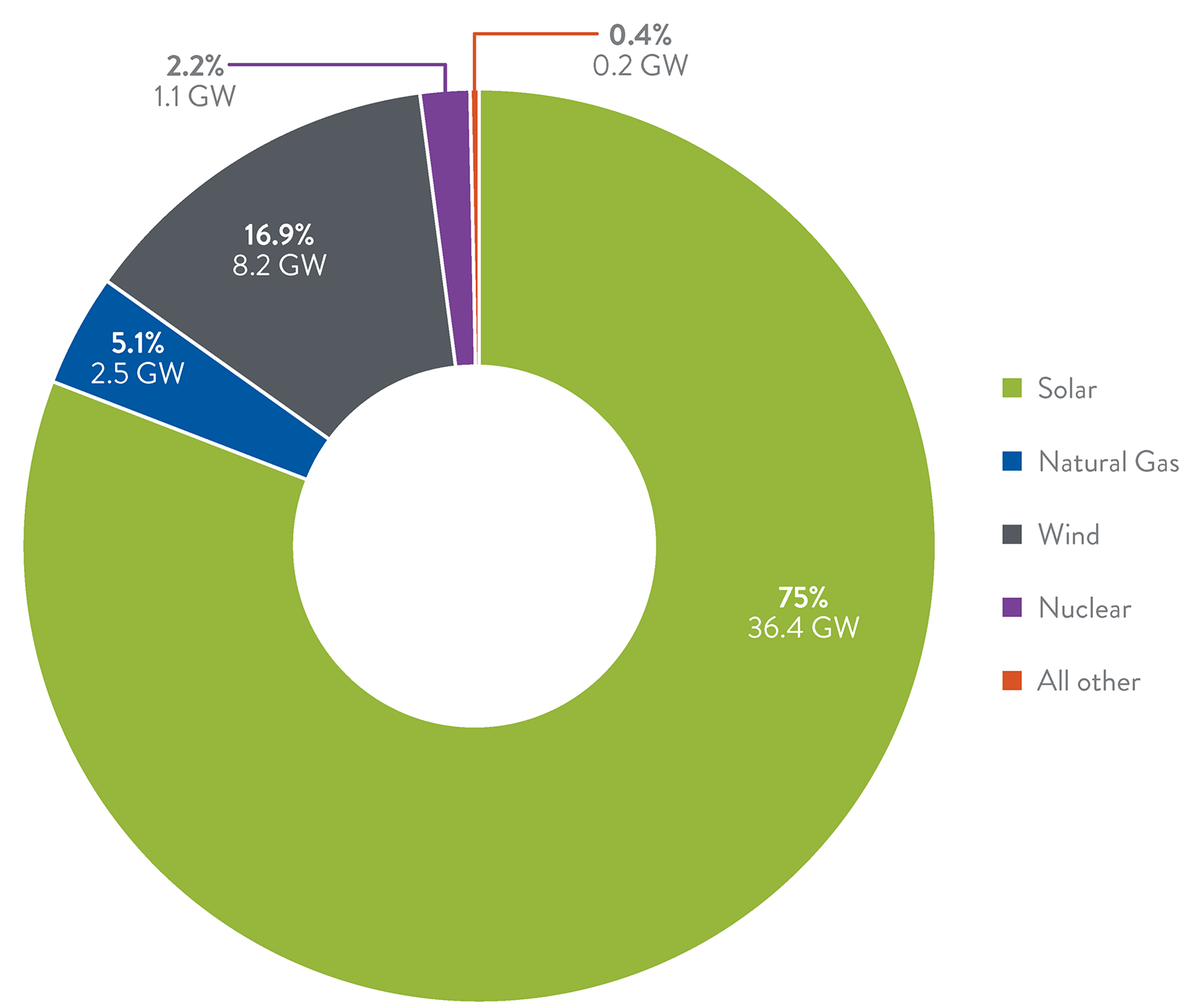 Source:
Source: U.S. Energy Information Administration[/caption]
Transmission and Distribution
Energy is channeled through the nation’s 600,000 miles of transmission lines (240,000 miles of which are considered high-voltage lines) and more than 5.5 million miles of local distribution lines with over 180 million power poles. Transmission lines are frequently referred to as the “interstate highway” of the electric grid, while the smaller distribution lines they feed into, often referred to as the “last mile” of the grid, would be akin to local roads taking you directly to your destination. As of 2024, more than 28,000 miles of transmission development is anticipated over the next 10 years, which is significantly higher than 2023’s 10-year estimate of 18,675 miles. Most of this development is in the planning stage to connect to new sources.
Substation transformers and distribution transformers are responsible for stepping up or down voltage levels from transmission lines or isolating electrical circuits during transfer to the distribution network. Substation transformers are facilities that convert high-voltage power to manageable levels for the distribution network, whereas distribution transformers are smaller devices attached to distribution poles that further convert voltage to safe and efficient levels for industrial, commercial, and residential users. More than 79,000 substation transformer facilities exist in the U.S., and these facilities are vulnerable to intentional attacks and damage from severe weather events.
There are more than 60 million distribution transformers nationwide, which could triple by 2050 to account for rising demands. The U.S. currently faces a shortage of distribution transformers owing to supply chain bottlenecks and few domestic manufacturers to choose from. Distribution transformer capacity will need to rise 160%–250% by 2050 to meet anticipated needs, but inventory backlogs threaten the ability to meet current or future demands. As of June 2024, acquiring new transformers faces lead times ranging from 80 to 210 weeks (120 weeks on average), up from 50 weeks in 2021. The cost of transformers has risen 60%–80% since January 2020. Transformer installation delays will slow down implementation of new energy projects and put the grid at risk if in-place transformers fail.
Electricity T&D losses averaged about 5% of the electricity transmitted and distributed in the U.S. in 2018–2022. In addition, 70% of power transformers are 25 years or older, 60% of circuit breakers are 30 years or older, and 70% of transmission lines are 25 years or older.
As energy demands grow, aging assets need to be replaced or modernized. Experienced employees retire, and utilities expect to add 10,700 power-line installer and repair job openings each year over the next decade. Energy sector jobs grew by 3% in 2023, which is 50% more than all U.S. employment growth. Energy jobs jumped from 8.1 million in 2022 to 8.35 million in 2023.
Despite making up only 6% of the number of electricity providers, investor-owned utilities (IOUs) serve 72% of U.S. electricity consumers, with the remaining 28% owned by government utilities, independent power producers, or cooperatively owned utilities.
Efforts are ramping up to increase interregional transmission lines. This includes a recent $1.3 billion IIJA investment to construct three proposed interregional lines across six states: the 175-mile Southline Transmission Project (New Mexico to Arizona); the 211-mile Twin States Clean Energy Link (New England to Quebec, Canada); and the 214-mile Cross-Tie Transmission Line (Utah to Nevada). An additional 35 GW of transfer capability across the U.S. would improve reliability during extreme weather events.
In 2022, Americans experienced roughly 5.5 hours of electricity disruptions, down from 7.5 hours in 2021. Failures within distribution systems make up 92% of electric service interruptions, largely due to severe weather events, vegetation, vandalism, and less stringent standards than are applied to the transmission network.
Transforming the Energy Mix
[caption id="attachment_19958" align="aligncenter" width="2137"]
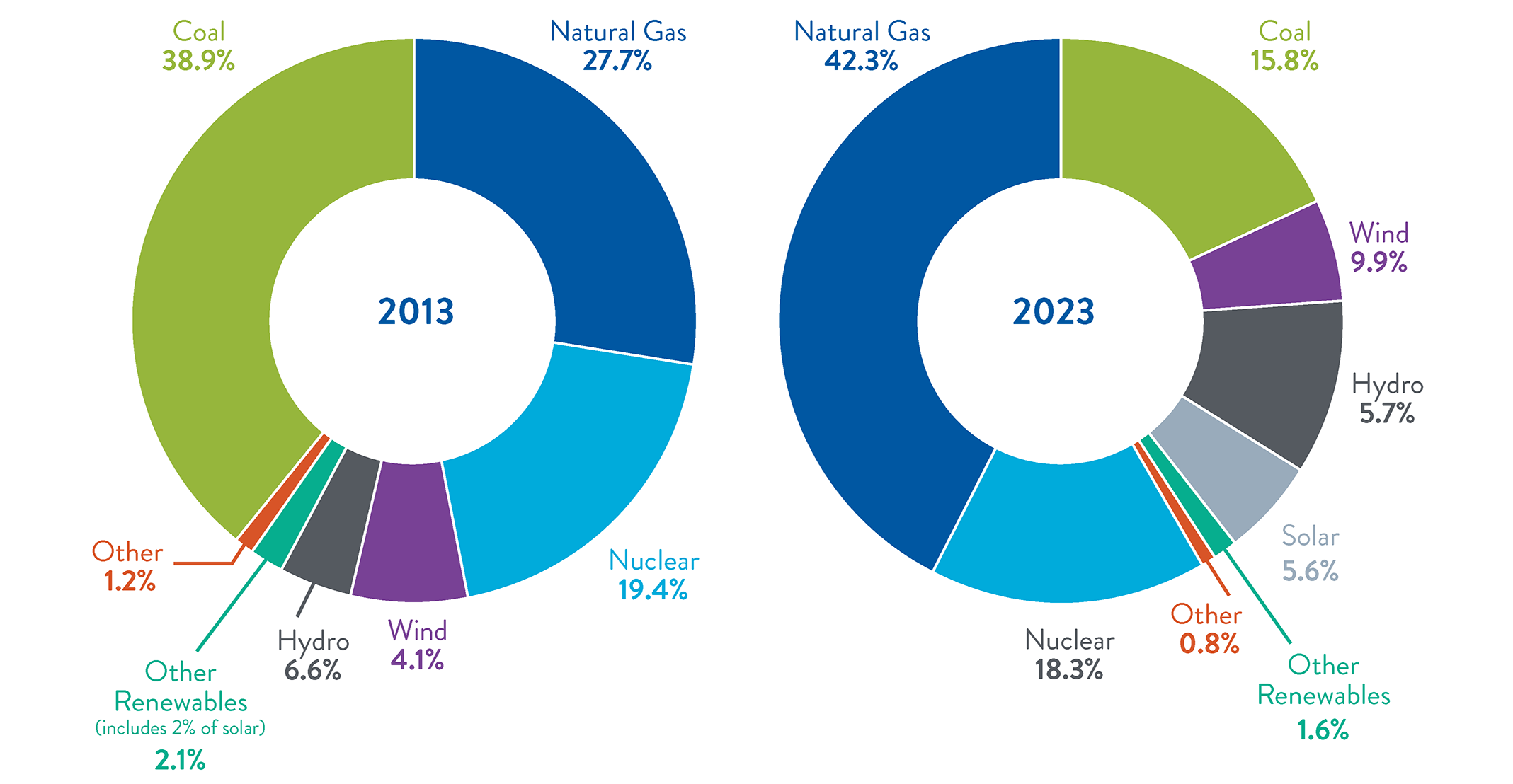 Source:
Source: Edison Electric Institute[/caption]
